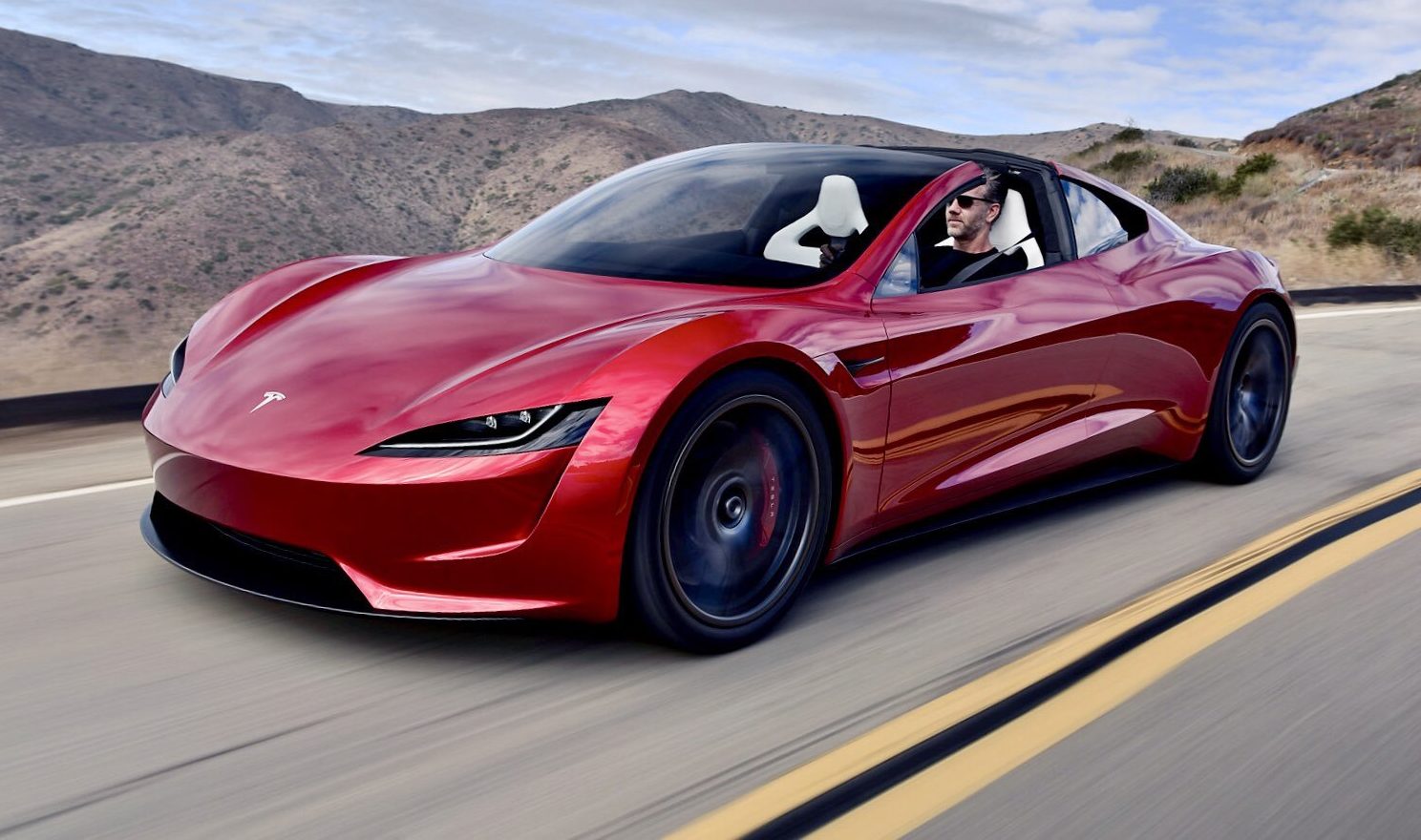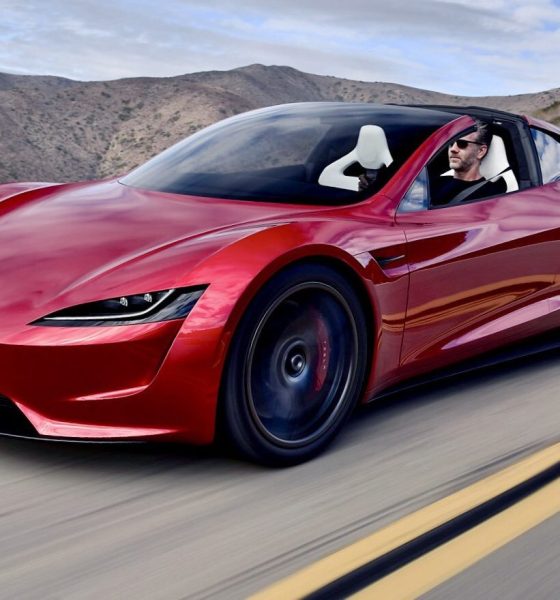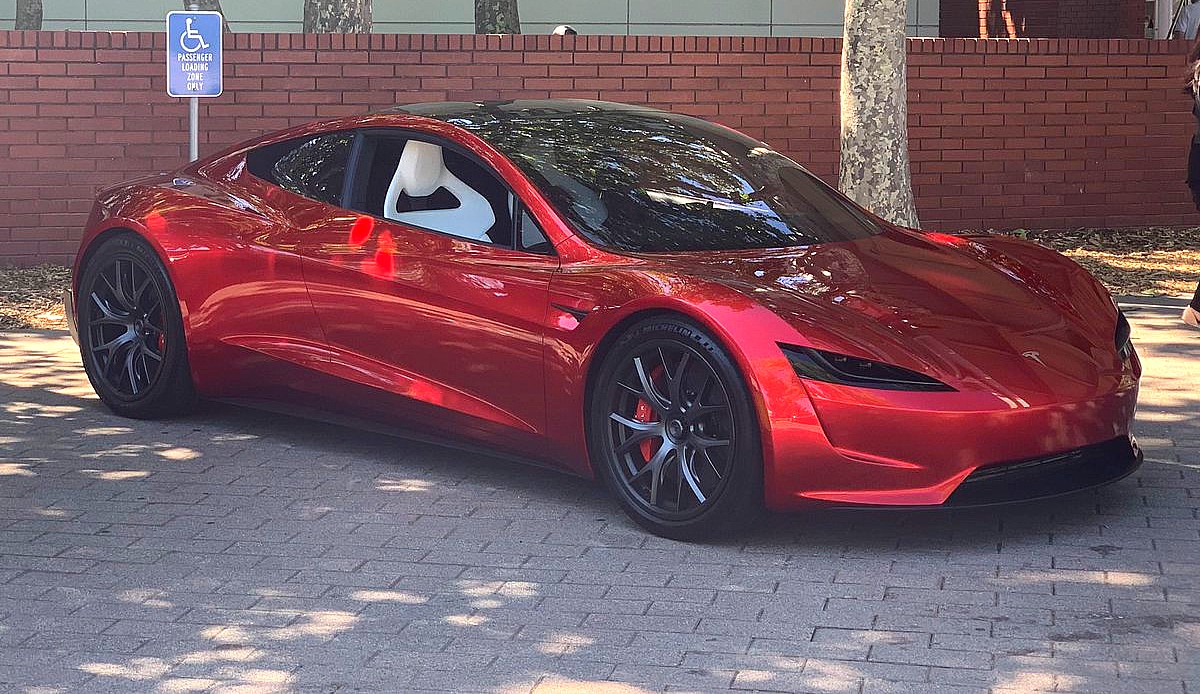

News
Tesla’s next-gen Roadster to take on the Nürburgring next year, says Elon Musk
Just days after Tesla CEO Elon Musk announced that the Model S would be hitting the iconic Nürburgring racetrack in Germany for a test run, he has now informed the public via his official Twitter account that the company’s highly anticipated performance car, the new Tesla Roadster, will hit the track next year.
Musk’s update came as a response to Tesla owner and noted YouTube tech reviewer Marques Brownlee, who candidly asked the Tesla CEO to bring the next-generation Roadster to the Nürburgring. Musk replied that the lightning-fast all-electric sports car would hit the pinnacle of automotive testing located in West Germany next year.
Next year
— Elon Musk (@elonmusk) September 11, 2019
A run on the Nürburgring will most definitely establish the new Tesla Roadster as the vehicle to beat in terms of performance. During the vehicle’s unveiling, Musk noted that the all-electric supercar is designed to be a “hardcore smackdown” to gasoline-powered automobiles. Musk followed this up during his appearance at the Ride the Lightning podcast, fondly stating that “We’re going to do things with the new Roadster that are kind of unfair to other cars. (It’s) crushingly good relative to the next best gasoline sports car.”
The original Roadster was Tesla’s first production model, manufactured from 2008 to 2012. It was the very first production car that used lithium-ion battery cells and was also one of the first fully-battery powered cars that were capable of traveling over 200 miles per charge. The revamp was announced in November 2017 and is expected to have an ultra-fast 1.9 second 0-60 mph time, with a top speed of over 250 mph and a 620 mile (997 km) range from its powerful 200 kWh battery. Musk has stated that the car will be able to travel further than 1,000 kilometers on a single charge.

Tesla has indicated that the new Roadster will be available for purchase in 2020, following the initial sales of the Tesla Model Y. The next-gen version of the car, dubbed by Tesla as the “quickest car in the world with record-setting acceleration, range and performance,” will feature several variants, one of which will be a “SpaceX Package” that will quite literally use rocket technology that is also used in Elon Musk’s private space enterprise.
The next-generation Roadster’s run at the nearly 13-mile track will be preceded by its more family-oriented sibling, the Model S Performance. After a “great” run by the Porsche Taycan at the German track in late August, Musk announced on September 5 that its flagship sedan, the Model S, would be completing laps at the iconic raceway on the week of September 8, 2019.
Roadblocks have caused the exact date of the test to become a mystery. Musk has stated that the Model S is already at the Nürburgring, but the vehicle will not test for an official time this week due to tuning and safety precautions needing that need to be resolved. Musk did indicate that the EV will be hitting the pavement in the near future, with former Formula One Champion Nico Roseberg behind the wheel.

News
Tesla FSD fleet is nearing 7 billion total miles, including 2.5 billion city miles
As can be seen on Tesla’s official FSD webpage, vehicles equipped with the system have now navigated over 6.99 billion miles.

Tesla’s Full Self-Driving (Supervised) fleet is closing in on almost 7 billion total miles driven, as per data posted by the company on its official FSD webpage.
These figures hint at the massive scale of data fueling Tesla’s rapid FSD improvements, which have been quite notable as of late.
FSD mileage milestones
As can be seen on Tesla’s official FSD webpage, vehicles equipped with the system have now navigated over 6.99 billion miles. Tesla owner and avid FSD tester Whole Mars Catalog also shared a screenshot indicating that from the nearly 7 billion miles traveled by the FSD fleet, more than 2.5 billion miles were driven inside cities.
City miles are particularly valuable for complex urban scenarios like unprotected turns, pedestrian interactions, and traffic lights. This is also the difference-maker for FSD, as only complex solutions, such as Waymo’s self-driving taxis, operate similarly on inner-city streets. And even then, incidents such as the San Francisco blackouts have proven challenging for sensor-rich vehicles like Waymos.
Tesla’s data edge
Tesla has a number of advantages in the autonomous vehicle sector, one of which is the size of its fleet and the number of vehicles training FSD on real-world roads. Tesla’s nearly 7 billion FSD miles then allow the company to roll out updates that make its vehicles behave like they are being driven by experienced drivers, even if they are operating on their own.
So notable are Tesla’s improvements to FSD that NVIDIA Director of Robotics Jim Fan, after experiencing FSD v14, noted that the system is the first AI that passes what he described as a “Physical Turing Test.”
“Despite knowing exactly how robot learning works, I still find it magical watching the steering wheel turn by itself. First it feels surreal, next it becomes routine. Then, like the smartphone, taking it away actively hurts. This is how humanity gets rewired and glued to god-like technologies,” Fan wrote in a post on X.
News
Tesla starts showing how FSD will change lives in Europe
Local officials tested the system on narrow country roads and were impressed by FSD’s smooth, human-like driving, with some calling the service a game-changer for everyday life in areas that are far from urban centers.

Tesla has launched Europe’s first public shuttle service using Full Self-Driving (Supervised) in the rural Eifelkreis Bitburg-Prüm region of Germany, demonstrating how the technology can restore independence and mobility for people who struggle with limited transport options.
Local officials tested the system on narrow country roads and were impressed by FSD’s smooth, human-like driving, with some calling the service a game-changer for everyday life in areas that are far from urban centers.
Officials see real impact on rural residents
Arzfeld Mayor Johannes Kuhl and District Administrator Andreas Kruppert personally tested the Tesla shuttle service. This allowed them to see just how well FSD navigated winding lanes and rural roads confidently. Kruppert said, “Autonomous driving sounds like science fiction to many, but we simply see here that it works totally well in rural regions too.” Kuhl, for his part, also noted that FSD “feels like a very experienced driver.”
The pilot complements the area’s “Citizen Bus” program, which provides on-demand rides for elderly residents who can no longer drive themselves. Tesla Europe shared a video of a demonstration of the service, highlighting how FSD gives people their freedom back, even in places where public transport is not as prevalent.
What the Ministry for Economic Affairs and Transport says
Rhineland-Palatinate’s Minister Daniela Schmitt supported the project, praising the collaboration that made this “first of its kind in Europe” possible. As per the ministry, the rural rollout for the service shows FSD’s potential beyond major cities, and it delivers tangible benefits like grocery runs, doctor visits, and social connections for isolated residents.
“Reliable and flexible mobility is especially vital in rural areas. With the launch of a shuttle service using self-driving vehicles (FSD supervised) by Tesla in the Eifelkreis Bitburg-Prüm, an innovative pilot project is now getting underway that complements local community bus services. It is the first project of its kind in Europe.
“The result is a real gain for rural mobility: greater accessibility, more flexibility and tangible benefits for everyday life. A strong signal for innovation, cooperation and future-oriented mobility beyond urban centers,” the ministry wrote in a LinkedIn post.
News
Tesla China quietly posts Robotaxi-related job listing
Tesla China is currently seeking a Low Voltage Electrical Engineer to work on circuit board design for the company’s autonomous vehicles.

Tesla has posted a new job listing in Shanghai explicitly tied to its Robotaxi program, fueling speculation that the company is preparing to launch its dedicated autonomous ride-hailing service in China.
As noted in the listing, Tesla China is currently seeking a Low Voltage Electrical Engineer to work on circuit board design for the company’s autonomous vehicles.
Robotaxi-specific role
The listing, which was shared on social media platform X by industry watcher @tslaming, suggested that Tesla China is looking to fill the role urgently. The job listing itself specifically mentions that the person hired for the role will be working on the Low Voltage Hardware team, which would design the circuit boards that would serve as the nervous system of the Robotaxi.
Key tasks for the role, as indicated in the job listing, include collaboration with PCB layout, firmware, mechanical, program management, and validation teams, among other responsibilities. The role is based in Shanghai.
China Robotaxi launch
China represents a massive potential market for robotaxis, with its dense urban centers and supportive policies in select cities. Tesla has limited permission to roll out FSD in the country, though despite this, its vehicles have been hailed as among the best in the market when it comes to autonomous features. So far, at least, it appears that China supports Tesla’s FSD and Robotaxi rollout.
This was hinted at in November, when Tesla brought the Cybercab to the 8th China International Import Expo (CIIE) in Shanghai, marking the first time that the autonomous two-seater was brought to the Asia-Pacific region. The vehicle, despite not having a release date in China, received a significant amount of interest among the event’s attendees.








